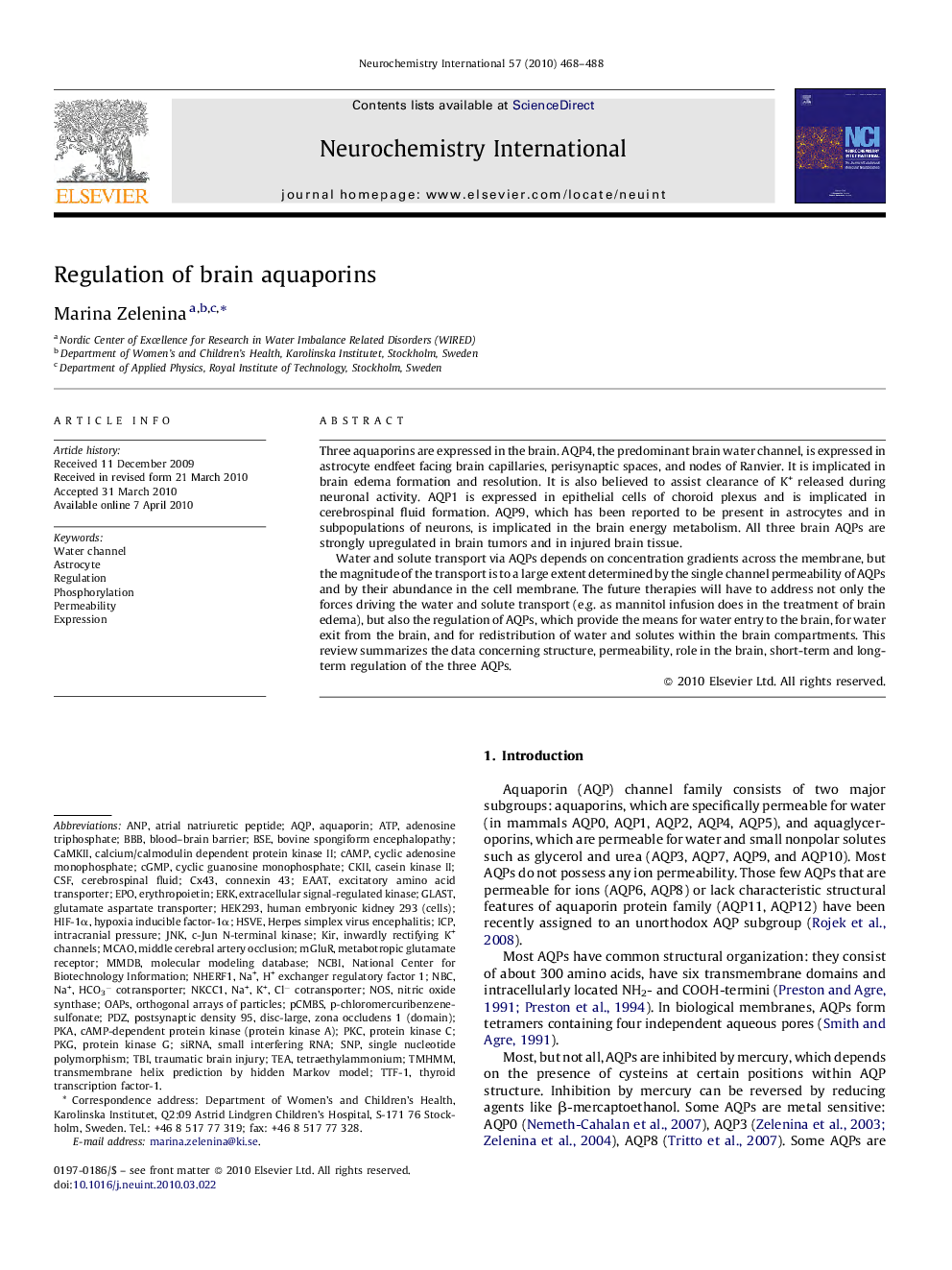| Article ID | Journal | Published Year | Pages | File Type |
|---|---|---|---|---|
| 2201242 | Neurochemistry International | 2010 | 21 Pages |
Abstract
Water and solute transport via AQPs depends on concentration gradients across the membrane, but the magnitude of the transport is to a large extent determined by the single channel permeability of AQPs and by their abundance in the cell membrane. The future therapies will have to address not only the forces driving the water and solute transport (e.g. as mannitol infusion does in the treatment of brain edema), but also the regulation of AQPs, which provide the means for water entry to the brain, for water exit from the brain, and for redistribution of water and solutes within the brain compartments. This review summarizes the data concerning structure, permeability, role in the brain, short-term and long-term regulation of the three AQPs.
Keywords
PDZERKNOSCaMKIIpKaGLASTMCAOHIF-1αPKCEAATNKCC1KirmGluRAQPHEK293CKIIPKGNBCTTF-1pCMBSNHERF1Calcium/calmodulin dependent protein kinase IITBIOAPSHSVEInwardly rectifying K+ channelsp-chloromercuribenzenesulfonatecGMPNCBIICPANPCX43TMHMMBSEJnkEPOc-Jun N-terminal kinasecAMPSmall interfering RNAsiRNAAdenosine TriphosphateATPCyclic adenosine monophosphateOrthogonal arrays of particlesAstrocyteTraumatic brain injuryHerpes simplex virus encephalitisaquaporinerythropoietinExpressionmiddle cerebral artery occlusionTetraethylammoniumBovine spongiform encephalopathyglutamate aspartate transporterexcitatory amino acid transporterBlood–brain barrierBBBhypoxia inducible factor-1αthyroid transcription factor-1Phosphorylationintracranial pressureCerebrospinal fluidCSFNational Center for Biotechnology InformationRegulationcyclic guanosine monophosphatePermeabilitynitric oxide synthaseprotein kinase GProtein kinase CSingle nucleotide polymorphismatrial natriuretic peptideTEASNPcasein kinase IIWater channelconnexin 43extracellular signal-regulated kinaseMetabotropic glutamate receptor
Related Topics
Life Sciences
Biochemistry, Genetics and Molecular Biology
Cell Biology
Authors
Marina Zelenina,
